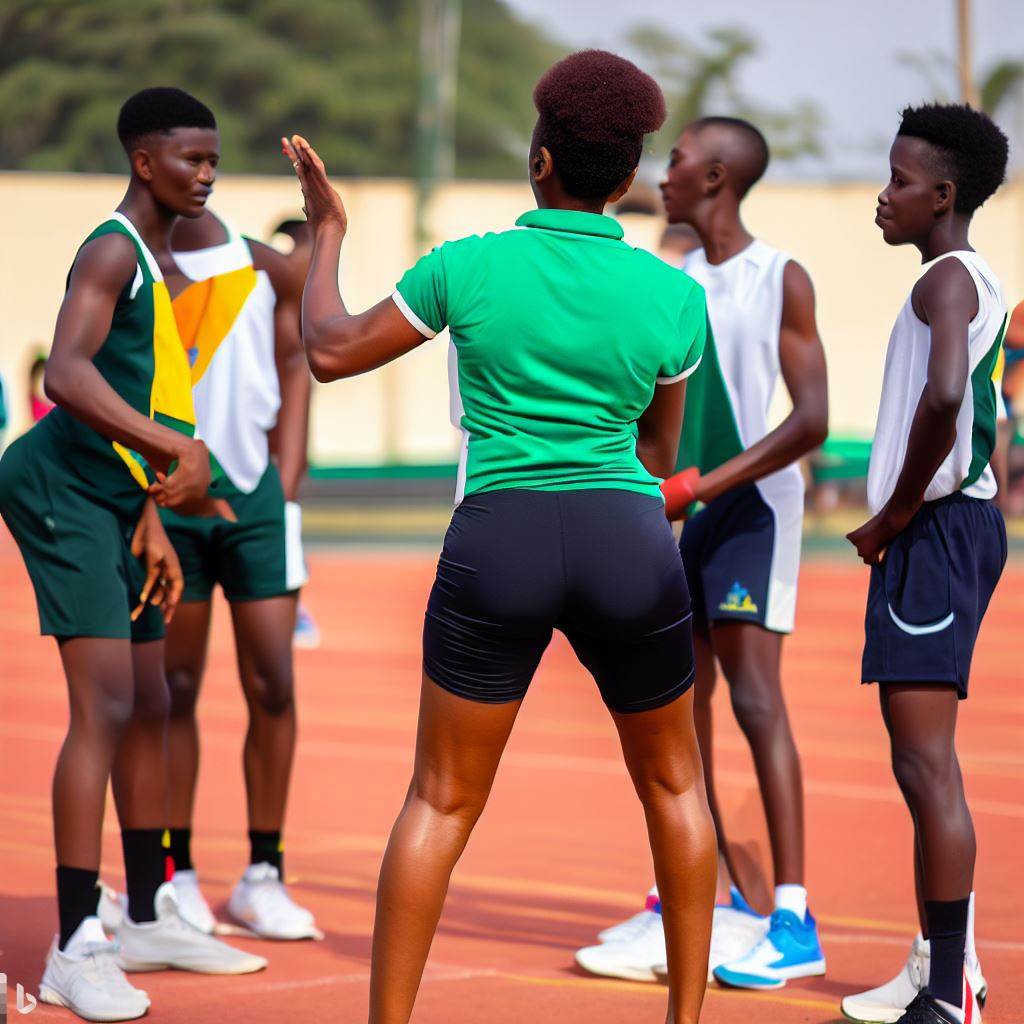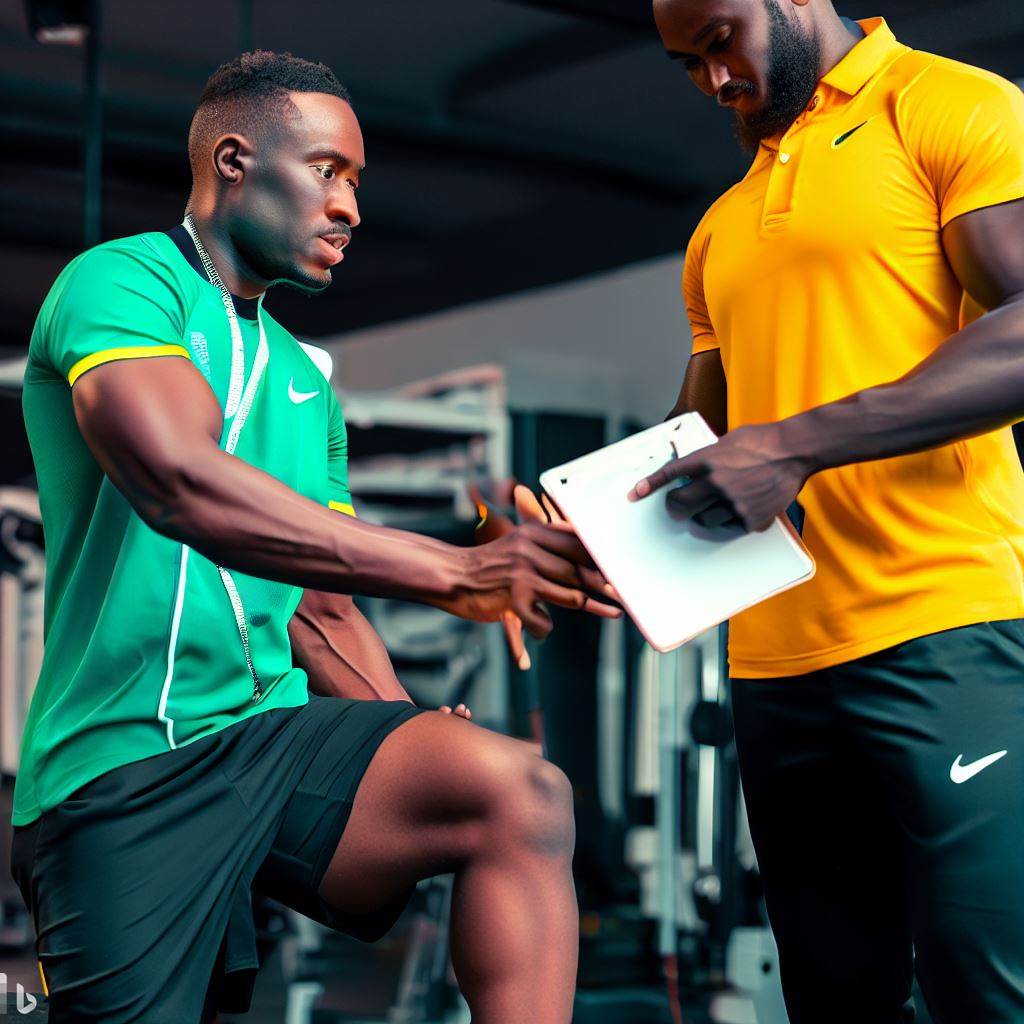Introduction
Let’s explore trends and innovations in teaching physical education (PE), staying updated with the latest approaches and practices.
A. Importance of Physical Education (PE) Teaching
Physical education is crucial in promoting a healthy lifestyle, teamwork, and discipline among Nigerian students. It’s a foundation for lifelong well-being.
B. Relevance of Discussing Trends and Innovations in PE Teaching in Nigeria
Understanding the latest trends and innovations in PE teaching is essential to adapt to evolving educational needs, enhance student engagement, and improve overall health outcomes in Nigeria.
Traditional PE Teaching Methods in Nigeria
A. Overview of traditional PE teaching methods
In Nigeria, traditional physical education (PE) teaching methods have been widely used in schools for many years.
These methods focus on discipline, repetition, and rote learning. Here is an overview of some of the common traditional PE teaching methods:
- Military-style drills: PE classes often start with military-style drills, where students march in formation and perform various physical exercises in unison.
- Rote learning: The emphasis is placed on memorization of movement patterns and routines rather than understanding the underlying principles of physical activities.
- Teacher-centered approach: The teacher is the central figure in traditional PE classes, making most decisions and dictating the pace and content of the lessons.
- Lack of variety: Traditional PE classes typically focus on a limited range of activities such as running, jumping, and basic team sports like football and basketball.
B. Limitations and challenges associated with these methods
While traditional PE teaching methods have been the norm in Nigeria, they are not without limitations and challenges.
Here are some of the main drawbacks:
- Lack of engagement: The teacher-centered approach and emphasis on rote learning can lead to disengagement and boredom among students.
- Limited skill development: Traditional PE methods often neglect individual skill development and focus more on group activities, limiting the potential growth of each student.
- Inequity in participation: Students with different abilities may struggle to participate equally in traditional PE activities, leading to feelings of exclusion and demotivation.
- Unrealistic application to real-life situations: The rote learning approach hinders students’ ability to transfer knowledge and skills gained in PE classes to real-life situations outside the school environment.
- Gender bias: Traditional PE teaching methods often reinforce gender stereotypes, with girls being encouraged to participate in less physically demanding activities compared to boys.
- Lack of innovation and adaptability: Traditional methods may be resistant to change, hindering the integration of new trends and innovations in PE teaching.
- Insufficient use of technology: With the rapid advancements in technology, traditional PE methods may not effectively incorporate the use of digital tools and resources to enhance teaching and learning experiences.
Despite these limitations, there has been a growing recognition of the need to modernize PE teaching in Nigeria.
Educators and policymakers actively explore innovative approaches to promote inclusivity, critical thinking, and lifelong physical activity habits development.
Nigeria can pave the way for a more progressive and dynamic approach to physical education by acknowledging its limitations and challenges with traditional teaching methods.
In the next section, we will discuss some of the trends and innovations emerging in PE teaching in Nigeria, which aim to overcome these limitations and provide better educational experiences for students.
Read: Benefits of Becoming an Athletic Trainer in Nigeria
Trends in PE Teaching in Nigeria
A. shift towards more student-centered teaching approaches
- Teachers now focus on empowering students to take charge of their own learning.
- They encourage active participation, critical thinking, and problem-solving skills.
- Group discussions, project-based learning, and cooperative learning strategies.
- Assessment methods also evolve to include self-assessment and peer assessment.
B. Incorporation of technology in PE teaching
- Teachers utilize technology to enhance teaching and engage students.
- Virtual reality and interactive gaming provide immersive and interactive experiences.
C. Significance of teaching life skills through PE
- PE classes are no longer limited to physical fitness but also focus on holistic development.
- Life skills such as teamwork, communication, leadership, and resilience are incorporated.
- Students learn to set goals, overcome challenges, and develop a positive growth mindset.
- PE becomes a platform to prepare students for real-life situations and future careers.
In Nigeria, PE teaching is undergoing a transformation towards student-centered approaches, prioritizing active learning, critical thinking, and problem-solving skills.
Teachers now act as facilitators, encouraging open discussions, group collaboration, and project-based learning.
This shift empowers students to take ownership of their education, marking a departure from traditional, teacher-centered methods where students merely followed instructions without question.
The integration of technology has become a prominent trend in Nigerian PE education, offering valuable tools to enhance learning experiences and student engagement.
Notably, video analysis tools enable students to review and improve their performance, promoting self-awareness and self-reflection.
Additionally, fitness tracking devices and mobile apps allow teachers to monitor physical activity levels and offer personalized feedback, promoting both fitness and student responsibility for their health.
Virtual reality and interactive gaming add a unique dimension to PE classes, making them more engaging and enjoyable.
These innovations extend beyond physical fitness, as PE now emphasizes the teaching of essential life skills.
Educators recognize the importance of holistic development, imparting skills such as teamwork, communication, leadership, and resilience through various PE activities.
These skills are transferable to real-life situations and future careers, contributing to students’ personal and social development.
In essence, Nigeria’s PE education system is evolving to create a more engaging and holistic learning environment that goes beyond physical fitness.
With a focus on student-centered approaches, technology integration, and life skills education, Nigeria is preparing its students for a dynamic and competitive future.
Read: Networking for Athletic Trainers in Nigeria: Tips and Groups
Innovations in PE Teaching in Nigeria
A. The use of gamification and virtual reality in PE classes
- Gamification involves incorporating game elements into the teaching and learning process in PE classes.
- It can be used to make physical education more engaging and interactive for students.
- Gamification in PE can include the use of game-based activities, challenges, and rewards.
- Virtual reality (VR) to enhance the learning experience in PE classes.
- VR allows students to engage in simulated physical activities and experiences.
- It offers a unique and immersive way for students to practice skills and learn new techniques.
- Gamification and VR can help create a dynamic and motivating learning environment in PE.
- They can also promote healthy competition and encourage students to push their limits.
- The use of gamification and VR in PE teaching requires proper planning and integration of technology.
- Teachers need to have access to appropriate equipment and software to implement these innovative methods.
B. Integration of multimedia resources to enhance learning
- Multimedia resources can be used to supplement traditional teaching methods in PE classes.
- Examples of multimedia resources include videos, infographics, interactive presentations, and online tools.
- These resources can provide visual and auditory stimulation, making learning more engaging and memorable.
- Videos to demonstrate proper techniques, sports strategies, and illustrate different exercises.
- Infographics can present information in a concise and visually appealing way, aiding students’ understanding.
- Interactive presentations allow students to actively participate in the learning process.
- Online tools and apps can provide additional practice opportunities, quizzes, and feedback.
- The integration of multimedia resources in PE teaching can cater to different learning styles.
- It can also help students develop digital literacy skills, which are essential in today’s technological world.
- Teachers need to ensure the availability and accessibility of multimedia resources to maximize their benefits.
C. Implementation of inclusive PE practices to cater to diverse students
- Inclusive PE practices aim to accommodate the needs and abilities of all students.
- Teachers should create an inclusive environment where every student feels valued and included.
- Differentiation strategies can be applied to adapt activities to individual students’ abilities.
- Modifying rules or equipment and providing alternative options can make activities more accessible.
- Collaboration and teamwork should be encouraged to promote social inclusion.
- Teachers need to have a good understanding of students’ diverse needs and disabilities.
- Communication and collaboration with other professionals, such as special education teachers, is important.
- Inclusive PE practices can contribute to the physical, social, and emotional development of all students.
- It fosters a positive and supportive learning environment for students with diverse backgrounds.
- Continuous professional development and training are crucial for teachers to effectively implement inclusive PE practices.
Read: The Role of PE Teachers in Building Healthy Communities

Benefits of Trends and Innovations in PE Teaching
A. The positive impact on students’ physical and mental well-being
- Trends and innovations in PE teaching in Nigeria have a profound impact on students’ physical well-being.
- Engaging in new and exciting activities keeps students active and promotes cardiovascular health.
- By incorporating technology and interactive tools, PE classes become more enjoyable and stimulating for students.
- Mental well-being is also positively affected as exercise releases endorphins, reducing stress and improving mood.
- The inclusion of mindfulness and meditation practices in PE classes promotes emotional well-being and relaxation.
- Overall, these trends and innovations contribute to a healthier and happier lifestyle for students.
B. Potential for increased student engagement and motivation
- Integrating trends and innovations in PE teaching redefines traditional methods, capturing students’ attention.
- Using technology such as interactive apps and wearables makes PE classes more appealing for tech-savvy students.
- Offering a variety of activities catered to different interests and abilities allows students to explore their strengths.
- The incorporation of gamification elements in PE classes turns learning into a fun and competitive experience.
- These engaging approaches foster intrinsic motivation, leading to increased participation and interest in physical education.
- Students are more likely to develop a lifelong love for physical activity and continue being active in adulthood.
C. The long-term advantages for students’ overall development
- Engaging in trends and innovations in PE teaching helps students develop essential life skills.
- Collaborative activities teach teamwork, communication, and problem-solving, enhancing their social capabilities.
- Physical education promotes discipline, resilience, and goal-setting, preparing students for future challenges.
- Improving physical fitness through innovative approaches reduces the risk of chronic diseases in adulthood.
- Enhanced mental well-being and stress management skills acquired in PE classes benefit students throughout their lives.
- Overall, these long-term advantages contribute to the holistic development of students, preparing them for a successful future.
By embracing trends and innovations in PE teaching, students in Nigeria can enjoy improved physical and mental well-being, increased engagement and motivation, and long-term benefits for their overall development.
These positive outcomes highlight the importance of embracing change and seeking innovative approaches in physical education.
Read: Women in Athletic Training in Nigeria: Opportunities and Challenges
Explore Further: Fitness Trends: Nigeria’s Strength Coaching Scene
Challenges and Opportunities in Implementing Trends and Innovations
A. Potential obstacles to adopting new teaching methods
- Lack of awareness about innovative teaching techniques among physical education (PE) teachers.
- Resistance from traditionalists who are hesitant to change their teaching approaches.
- Limited resources and funding for implementing new technologies or teaching tools.
- Outdated curriculum and assessment methods that do not align with innovative practices.
- Resistance from school administrators or policymakers who prioritize standardized testing over innovative teaching.
B. Importance of continuous professional development for PE teachers
- Continuous professional development (CPD) equips PE teachers with the knowledge and skills to implement new teaching methods.
- CPD allows teachers to stay updated on the latest research, trends, and technologies in PE education.
- It helps teachers understand the unique needs and capabilities of their students, fostering personalized and inclusive teaching approaches.
- CPD enhances the professional growth and job satisfaction of PE teachers by providing opportunities for networking and collaboration.
- PE teachers who engage in CPD are better equipped to address the challenges and demands of their profession.
C. Opportunities for collaboration and knowledge-sharing among educators
- Collaborative platforms, such as online forums or conferences, provide opportunities for PE teachers to exchange innovative ideas and best practices.
- Collaboration enables PE teachers to learn from each other’s experiences and adapt successful teaching methods to their own classrooms.
- Sharing knowledge and resources among educators promotes a supportive and inspiring professional community.
- Partnerships between schools, universities, and organizations can lead to joint projects and research initiatives, fostering a culture of innovation.
- Collaborative efforts enhance the overall quality of PE education and contribute to the professional growth of all educators involved.
In summary, implementing trends and innovations in PE teaching in Nigeria faces various challenges but also presents significant opportunities.
Potential obstacles, such as lack of awareness, resistance to change, limited resources, outdated curriculum, and policy limitations, need to be addressed to promote the adoption of new teaching methods.
Continuous professional development plays a crucial role in equipping PE teachers with the necessary skills and knowledge to implement innovative practices.
Additionally, collaboration and knowledge-sharing among educators foster a supportive and inspiring professional community that enhances the quality of PE education.
By overcoming obstacles and embracing opportunities, Nigerian PE teachers can create a dynamic and engaging learning environment for their students.
Conclusion
A. Key Points Summary
In this blog post, we’ve explored exciting trends and innovations in PE teaching in Nigeria.
These include gamification, technology integration, and holistic health approaches. Embracing these trends can revolutionize physical education in the country.
B. Emphasizing Importance
It’s vital for PE educators to stay updated with these advancements to engage students effectively and promote a healthier society.
Embracing innovation ensures our educational system remains relevant and impactful.
C. Encouragement
To all PE teachers, don’t hesitate to explore these new approaches in your classrooms.
Share your experiences and collaborate with peers. Together, we can shape the future of physical education in Nigeria for the better.




